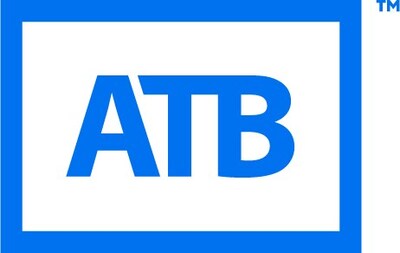Sign up for daily news updates from CleanTechnica on email. Or follow us on Google News!
AMOC — the abbreviation means nothing to most people living along the eastern seaboard of the United States, the Maritimes in Canada, Greenland, Scandinavia, the UK, and Europe, but it is of critical importance to them. AMOC stands for the Atlantic meridional overturning current, a vast river in the Atlantic Ocean that transports heat from the Equator north along the East Coast of America before turning to the east at Cape Cod and Nova Scotia and heading toward the Arctic, then down the west coast of Europe and back down toward the Equator.
AMOC is different than the Gulf Stream. To understand it, think of the cooling system in a conventional car. Coolant circulates throughout the engine, picking up heat from the cylinders. Then it travels to the radiator, where it is cooled before returning to the engine to be heated again. If the coolant stops flowing, the engine gets too hot and the radiator gets too cool. The car stops running and the driver is left stranded on the side of the road.
A water pump attached to the engine makes the coolant circulate in the car’s cooling system, but what makes the water in the AMOC move? The simple answer is the trade winds near the equator and the rotation of the Earth. But there are other factors as well. Changes in the density and salinity of ocean water also are important. Hot water is less dense than cold water, so ocean water heated along the equator rises to the surface. Water that is less salty is also less dense and floats above saltier water.
Dramatic Climate Changes
In a research paper published February 9, 2024 in the journal Science Advances, three oceanographers from the Netherlands warn that there are strong indications the AMOC current is slowing and could stop flowing altogether in the not too distant future — possibly in a few decades. What would that mean? In their model of the AMOC, London cools by an average of 18°F and Bergen, Norway by 27°F. Sea levels along North America’s east coast would rise significantly, with negative consequences for cities and seaside communities located in that area.
“We are moving closer [to the collapse], but we’re not sure how much closer,” Rene van Westen told the Associated Press. “We are heading towards a tipping point.” The study is the first to use complex simulations and include multiple factors to track the strength of vital overall ocean circulation, which the research says is slowing.
The AMOC is an enormous river that transports water at a rate of 30 million cubic meters per second — far more than all the terrestrial rivers of the world combined. In the tropics, the surface of the ocean is hotter and less dense, which allows it to ride on top of the cooler water below. When it gets to Greenland and the Arctic, the water has cooled and become more dense. It also becomes saltier. That colder, heavier water then becomes a submerged waterfall that plunges more than 4,000 meters to the ocean floor where it begins its journey back toward the Equator.
The problem is that global warming is causing a dramatic increase in meltwater from the Greenland and Arctic ice sheets. All that fresh water is less dense than the water in the AMOC and interrupts its normal circulation.
Could The AMOC Shut Down?
Is it possible the AMOC could stop flowing? Yes, it is. In fact, it has done so many times in the history of the Earth. This latest research suggests it could do so again in the next 100 years. The study broke new ground by looking for warning signs in the salinity levels at the southern extent of the Atlantic Ocean between Cape Town and Buenos Aires. Simulating changes over a period of 2,000 years on computer models of the global climate, it found a slow decline can lead to a sudden collapse over fewer than 100 years, with calamitous consequences.
The paper said the results provided a “clear answer” about whether such an abrupt shift was possible. “This is bad news for the climate system and humanity as up till now one could think that AMOC tipping was only a theoretical concept and tipping would disappear as soon as the full climate system, with all its additional feed backs, was considered,” van Westin told The Guardian.
The researchers also mapped some of the consequences of AMOC collapse. Sea levels in the Atlantic would rise by a meter in some regions, inundating many coastal cities. The wet and dry seasons in the Amazon would flip, potentially pushing the already weakened rain forest past its own tipping point. Temperatures around the world would fluctuate far more erratically. The southern hemisphere would become warmer. Europe would cool dramatically and have less rainfall. While this might sound appealing compared with the current heating trend, the changes would hit 10 times faster than now, making adaptation almost impossible (emphasis added).
“What surprised us was the rate at which tipping occurs,” said the paper’s lead author, René van Westen, of Utrecht University. “It will be devastating.” He said there was not yet enough data to say whether this would occur in the next year or in the coming century, but when it happens, the changes are irreversible on human timescales. In the meantime, the direction of travel is undoubtedly in an alarming direction. “We are moving towards it. That is kind of scary,” van Westen said. “We need to take climate change much more seriously.”
A year ago, Danish researchers Peter and Susanne Ditlevsen came to much the same conclusion as their Dutch colleagues. Using data supplied by sensors in the North Atlantic, they said there is ample evidence the AMOC could collapse as early as 2025 or as late as 2095. When (not if) that happens, it will severely disrupt the rains that billions of people depend on for food in India, South America, and West Africa. It will increase storms and lower temperatures in Europe. It will lead to rising sea levels on the east coast of North America and further endanger both the Amazon rain forest and Antarctic ice sheets. “I think we should be very worried,” Peter Ditlevsen said. “This would be a very, very large change. The AMOC has not been shut off for 12,000.”
That study, published July 25, 2023, in the journal Nature Communications, used sea surface temperature data stretching back to 1870 as a proxy for the change in strength of the Gulf Stream, which is a component of the AMOC, over time. They compared the date to the path seen in systems that are approaching a particular type of crossover point called a “saddle-node bifurcation.” We would call it a “tipping point.”
The Takeaway
Is there a takeaway here? Of course there is, and you can write it yourself. Burning fossil fuels has added the heat of 25 BILLION atomic bombs to the environment in just the past 50 years, according to a 2023 study by Andrew King and Steven Sherwood of the University of New South Wales. “Billions of nuclear bombs to produce 1.2℃ of heating — so what?” the researchers ask. “It seems small, considering how much temperature varies on a daily basis. But almost all of this energy to date has been taken up by the oceans. It’s no wonder we’re seeing rapid warming in our oceans.”
We hear an endless stream of mindless drivel from extreme right-wing leaders and media outlets about how fossil fuels have lifted millions out of poverty (which is interesting because they loathe poor people) and there is some truth to that. But at the same time, we have unleashed millions of years of stored energy in a very short period of time. It’s like emptying a swimming pool into a bathtub and being surprised when the tub overflows.
It’s really simple math. X plus 25 billion X is too goddam much, no matter what you are measuring. Anybody who graduated from high school could tell you that, but still we persist in our insane quest for more coal, more methane, and more oil with no end in sight. If we persist in our fossil fuel addiction, we will degrade the only planet we will ever know to the point where human survival is threatened. Why are we so comfortable with that?
Have a tip for CleanTechnica? Want to advertise? Want to suggest a guest for our CleanTech Talk podcast? Contact us here.
Latest CleanTechnica TV Video
I don’t like paywalls. You don’t like paywalls. Who likes paywalls? Here at CleanTechnica, we implemented a limited paywall for a while, but it always felt wrong — and it was always tough to decide what we should put behind there. In theory, your most exclusive and best content goes behind a paywall. But then fewer people read it!! So, we’ve decided to completely nix paywalls here at CleanTechnica. But…
Thank you!
CleanTechnica uses affiliate links. See our policy here.



